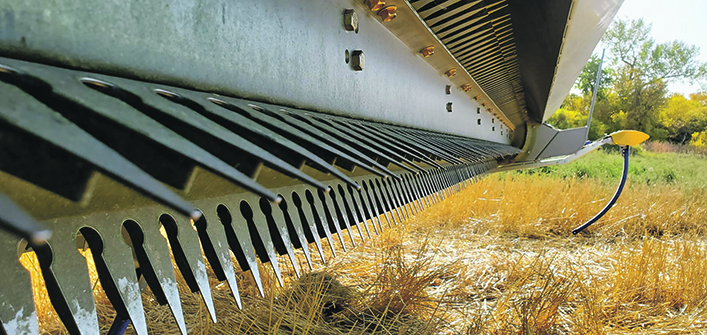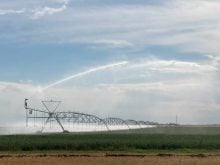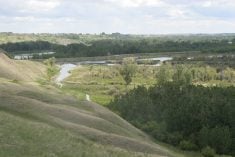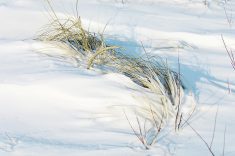In the areas suffering from consecutive years of serious drought, soul searching is underway on what can be done differently to make better use of whatever moisture is available.
Troy LaForge, a well-known agronomist from southwestern Saskatchewan, believes stripper headers on combines are going to become increasingly popular. LaForge farms near Cadillac and uses a stripper header.
Shelbourne Reynolds has long manufactured stripper headers in the United Kingdom and has a North American dealer network.
The headers have limitations. They work well in cereal and flax crops, pulling off the heads and the bolls, but header losses can be unacceptable in canola. As well, stripper headers can be difficult to operate in hilly terrain.
Read Also

Trump’s trade policies take their toll on Canadian producers
U.S. trade policy as dictated by president Donald Trump is hurting Canadian farmers in a multitude of ways.
Besides increased combine efficiency, their benefit is long-standing stubble to trap any available snow. Even an inch of extra moisture can make a big difference in a dry year.
In addition to the snow trap, the long stubble cuts down on evaporation during the growing season. Producers like LaForge also believe the system allows for better water infiltration when big rains occur.
Hand in hand with the use of a stripper header is the use of disc openers for the seeding implement. Hoe openers can’t effectively go through the tall stubble without plugging.
LaForge says stripper headers are more common south of the border because disc openers are more common. Most seeding equipment manufacturers offer disc openers and one of those is also working on a Canadian built stripper header.
K-Hart Industries, based at Elrose, Sask., is a relatively minor player when it comes to seeding equipment, but the company’s new Spyder drill has garnered attention for the unique way it folds for transport.
Less known are the efforts by company founder Kim Hartman and his team to develop a new stripper header called the Raptor. It’s logical for a company based on disc opener seeding equipment to also develop a header to leave long-standing stubble. Testing of the header is underway ahead of any large commercial launch.
In areas where too much moisture is more often a concern than too little, producers will no doubt shy away from stripper headers. Too much crop residue along with extra snow melt moisture might cause unacceptable seeding delays. However, in much of the prairie region, moisture conservation is gaining attention and this goes beyond stripper headers.
In areas with good snow cover last winter, might a winter cereal have been a good bet? Unfortunately, winter wheat and fall rye acreage has been declining, so direct comparisons are lacking for most producers.
Unless there are good rains in the months ahead, summerfallow could be poised for a modest comeback next year. Letting land lie fallow certainly doesn’t appeal to me, but some producers are convinced that it makes economic sense when moisture is lacking.
One of the drawbacks to summerfallow is trying to control weeds without the benefit of crop competition. Of the occasional summerfallow fields you see, many have a significant kochia issue. Using tillage to control kochia would seem to nullify the whole objective of water conservation.
One unfortunate adaptation to ongoing drought is crop selection influenced by crop insurance coverage. This year’s coverage levels made canola an attractive choice economically, even when it may not have been the best agronomic choice.
Dry years have always eventually been followed by wet years. For the parched regions, that can’t happen soon enough.
















